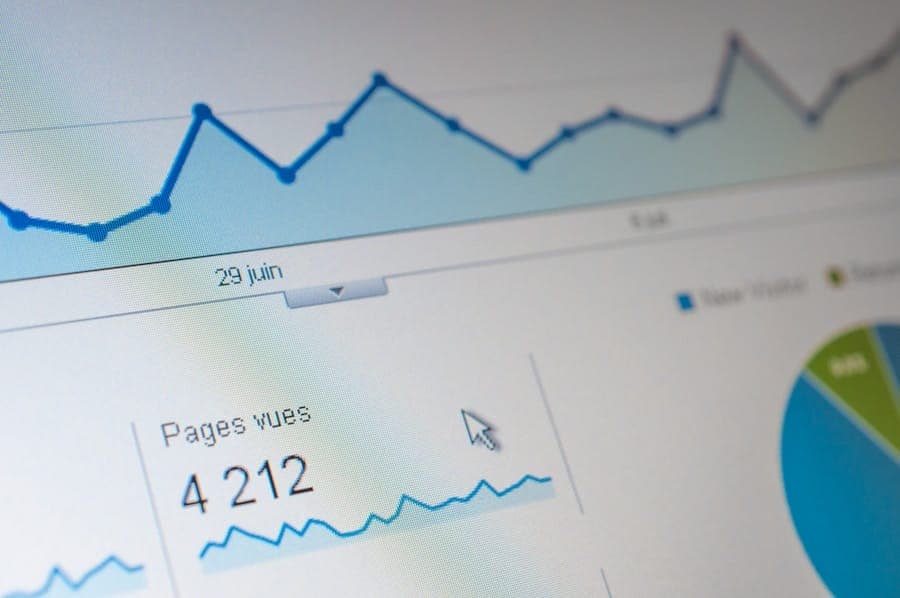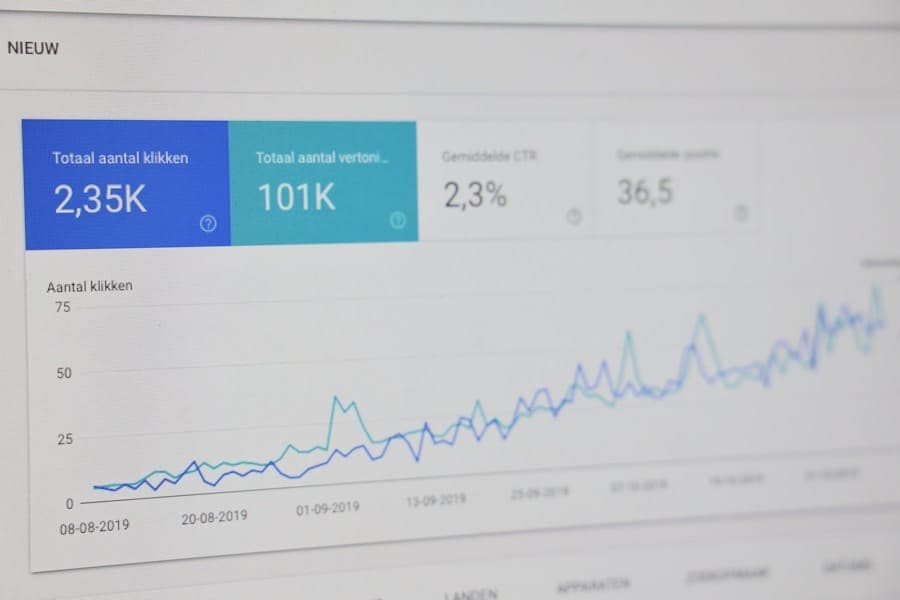
In the ever-evolving landscape of digital marketing, we find ourselves at a crossroads where Search Engine Optimization (SEO) and Pay-Per-Click (PPC) advertising converge. Both strategies serve distinct purposes, yet they complement each other in ways that can significantly enhance our online presence. SEO focuses on organic search results, aiming to improve our website’s visibility through keyword optimization, quality content, and backlinks.
On the other hand, PPC allows us to gain immediate visibility through paid ads, targeting specific keywords and demographics to drive traffic to our site. The synergy between SEO and PPC lies in their ability to provide a comprehensive approach to online marketing. By leveraging both strategies, we can create a robust digital footprint that not only attracts visitors but also converts them into customers.
Research from Google indicates that businesses that utilize both SEO and PPC can achieve up to 25% more clicks than those relying on a single strategy. This statistic underscores the importance of integrating these two powerful tools to maximize our reach and effectiveness.
Key Takeaways
- Understanding the synergy between SEO & PPC is crucial for maximizing online visibility and conversions.
- Leveraging SEO & PPC together can help businesses achieve maximum visibility in search engine results pages.
- Integrating SEO & PPC strategies can lead to higher conversions by targeting both organic and paid search traffic.
- Utilizing SEO & PPC can help businesses reach a wider audience by covering both organic and paid search results.
- Enhancing visibility and conversions can be achieved through unified SEO & PPC efforts, leading to a more comprehensive online presence.
Leveraging SEO & PPC for Maximum Visibility
To truly harness the power of SEO and PPC, we must first understand how to leverage each strategy effectively. With SEO, our goal is to optimize our website for search engines, ensuring that we rank high for relevant keywords. This involves conducting thorough keyword research, creating high-quality content, and building authoritative backlinks.
By focusing on these elements, we can improve our organic search rankings and increase our visibility over time. Conversely, PPC allows us to gain immediate visibility in search engine results pages (SERPs). By creating targeted ad campaigns, we can reach potential customers who are actively searching for products or services similar to ours.
The beauty of PPC lies in its flexibility; we can adjust our bids, targeting options, and ad copy in real-time based on performance metrics. This adaptability enables us to maximize our visibility and ensure that we are reaching the right audience at the right time.
Integrating SEO & PPC Strategies for Higher Conversions

Integrating our SEO and PPC strategies is essential for driving higher conversions. When we align our efforts, we create a seamless experience for users, guiding them from initial search to final purchase. For instance, we can use insights gained from our PPC campaigns to inform our SEO strategy.
If certain keywords are performing well in our paid ads, we can optimize our website content around those keywords to enhance organic visibility. Moreover, by utilizing landing pages that are specifically designed for PPC campaigns, we can improve conversion rates significantly. These landing pages should be optimized for both user experience and SEO best practices.
By ensuring that they load quickly, are mobile-friendly, and contain relevant content, we can create an environment that encourages visitors to take action. This integrated approach not only boosts our conversion rates but also enhances our overall marketing effectiveness.
Utilizing SEO & PPC to Reach a Wider Audience
One of the most significant advantages of combining SEO and PPC is the ability to reach a wider audience. While SEO helps us attract users who are searching for specific keywords organically, PPC allows us to target demographics that may not be actively searching but are still likely to be interested in our offerings. By utilizing both strategies, we can cast a wider net and engage with potential customers across various touchpoints.
Additionally, we can use PPC campaigns to promote content that supports our SEO efforts. For example, if we publish a blog post that addresses a trending topic in our industry, we can run a PPC campaign to drive traffic to that post. This not only increases visibility but also positions us as thought leaders in our field.
By providing valuable content through both organic and paid channels, we can attract a diverse audience and foster brand loyalty.
Enhancing Visibility and Conversions through Unified SEO & PPC Efforts
The unification of our SEO and PPC efforts is crucial for enhancing both visibility and conversions. When these strategies work in tandem, they create a cohesive marketing ecosystem that drives traffic and encourages user engagement. For instance, when users see both organic listings and paid ads for our brand on the same search results page, it reinforces brand recognition and trust.
Furthermore, by analyzing data from both channels, we can identify trends and insights that inform our overall marketing strategy. For example, if we notice that certain keywords are driving high traffic from both organic and paid sources, we can allocate more resources toward those keywords in both campaigns. This data-driven approach allows us to optimize our efforts continuously and ensure that we are maximizing our visibility and conversion potential.
Maximizing ROI with Combined SEO & PPC Campaigns

Understanding the Strengths of SEO and PPC
While SEO requires time and effort to build momentum, it ultimately leads to sustainable traffic growth without ongoing costs per click. In contrast, PPC provides immediate results but requires ongoing investment.
Balancing Short-Term Gains with Long-Term Growth
By integrating these two strategies, we can balance short-term gains with long-term growth. To maximize ROI effectively, we should focus on tracking key performance indicators (KPIs) across both channels. Metrics such as click-through rates (CTR), conversion rates, and cost per acquisition (CPA) will provide valuable insights into the effectiveness of our campaigns.
Data-Driven Decision Making
By analyzing this data regularly, we can make informed decisions about where to allocate resources and how to optimize our strategies for better performance.
Implementing Unified SEO & PPC Strategies for Long-Term Success
For long-term success in digital marketing, implementing unified SEO and PPC strategies is essential. This involves creating a comprehensive plan that outlines how both channels will work together to achieve our business objectives. We should start by conducting a thorough analysis of our current performance in both areas, identifying strengths and weaknesses that can inform our strategy moving forward.
Collaboration between teams is also vital for successful implementation. By fostering communication between our SEO and PPC teams, we can ensure that everyone is aligned on goals and strategies. Regular meetings to discuss performance metrics, share insights, and brainstorm new ideas will help us stay agile and responsive to changes in the market.
Measuring the Impact of Unified SEO & PPC on Conversions and Visibility
Finally, measuring the impact of our unified SEO and PPC efforts is crucial for understanding their effectiveness in driving conversions and visibility. We should establish clear metrics for success at the outset of our campaigns, allowing us to track progress over time. Tools like Google Analytics can provide valuable insights into user behavior, helping us understand how visitors interact with our website after clicking on either an organic listing or a paid ad.
By analyzing this data regularly, we can identify trends and make adjustments as needed to optimize performance. For instance, if we notice that users who arrive via PPC are converting at a higher rate than those coming from organic search, we may want to invest more heavily in paid advertising while continuing to refine our SEO strategy. Ultimately, by measuring the impact of our combined efforts, we can ensure that we are maximizing both visibility and conversions in a way that drives sustainable growth for our business.
In conclusion, the integration of SEO and PPC is not just a trend; it’s a necessity for businesses looking to thrive in the digital landscape.
By understanding their synergy, leveraging their strengths, and implementing unified strategies, we position ourselves for long-term success in reaching wider audiences while maximizing ROI.
As we continue to adapt to the ever-changing digital environment, let’s embrace the power of combined efforts in driving visibility and conversions for our brands.
If you’re interested in learning more about database architecture integration, check out the article Database Architecture Integration. This article delves into the importance of effectively integrating databases into your website to improve performance and user experience. By understanding how to optimize your database architecture, you can enhance your overall web presence and drive more conversions.
FAQs
What is SEO?
SEO stands for Search Engine Optimization. It is the practice of increasing the quantity and quality of traffic to your website through organic search engine results.
What is PPC?
PPC stands for Pay-Per-Click. It is a model of internet marketing in which advertisers pay a fee each time one of their ads is clicked. It is a way of buying visits to your site, rather than attempting to “earn” those visits organically.
How can SEO and PPC be unified for maximum visibility and conversions?
By combining SEO and PPC strategies, businesses can increase their online visibility and drive more conversions. This can be achieved by using PPC data to inform SEO strategy, targeting high-performing keywords, and creating cohesive messaging across both channels.
What are the benefits of unifying SEO and PPC?
Some benefits of unifying SEO and PPC include increased visibility in search engine results, better understanding of customer behavior, improved keyword targeting, and higher conversion rates.
What are some best practices for unifying SEO and PPC?
Best practices for unifying SEO and PPC include aligning keyword targeting, using PPC data to inform SEO strategy, creating cohesive messaging, and analyzing data from both channels to optimize performance.




